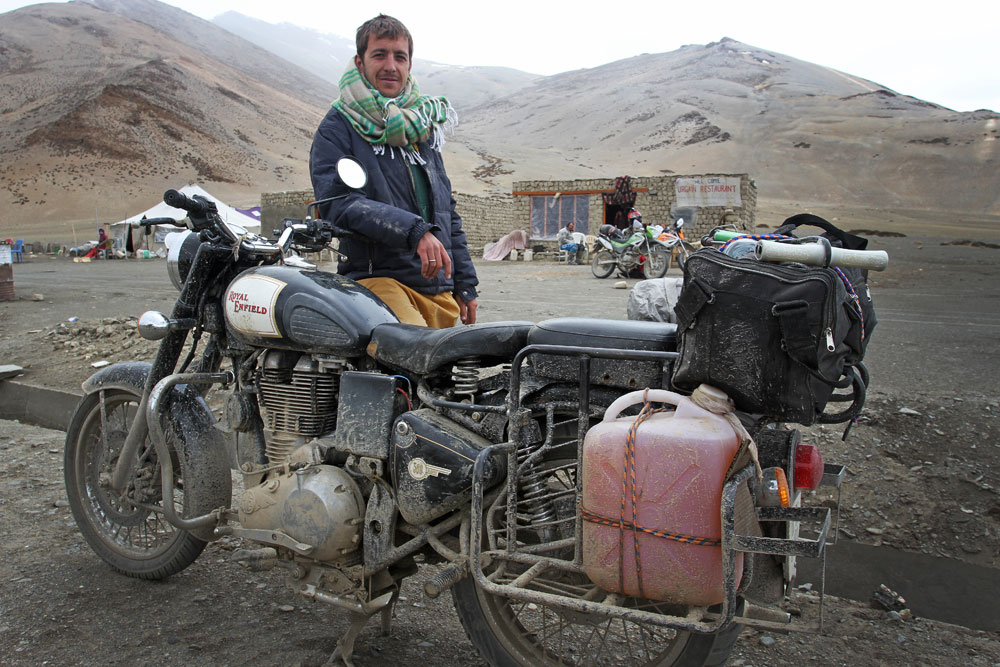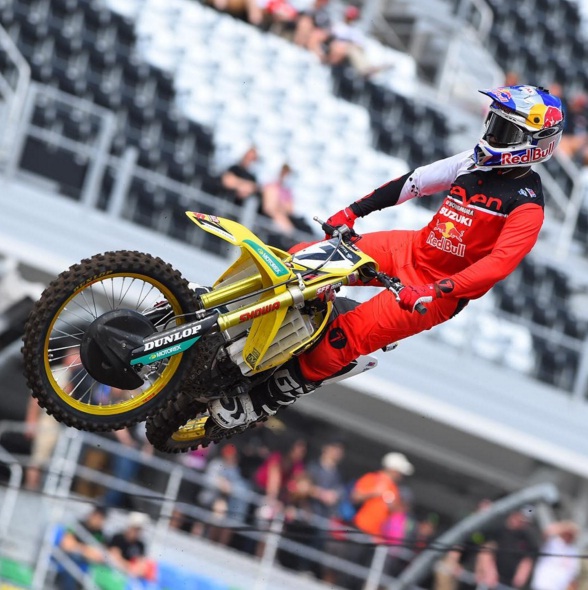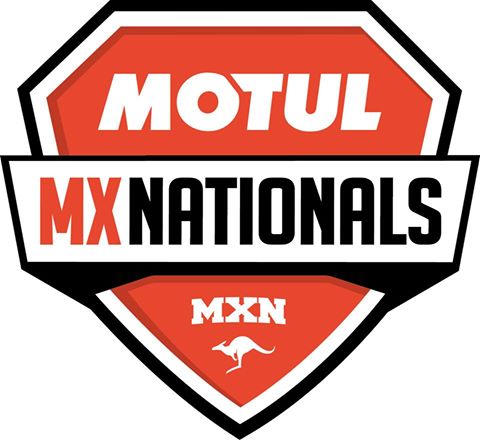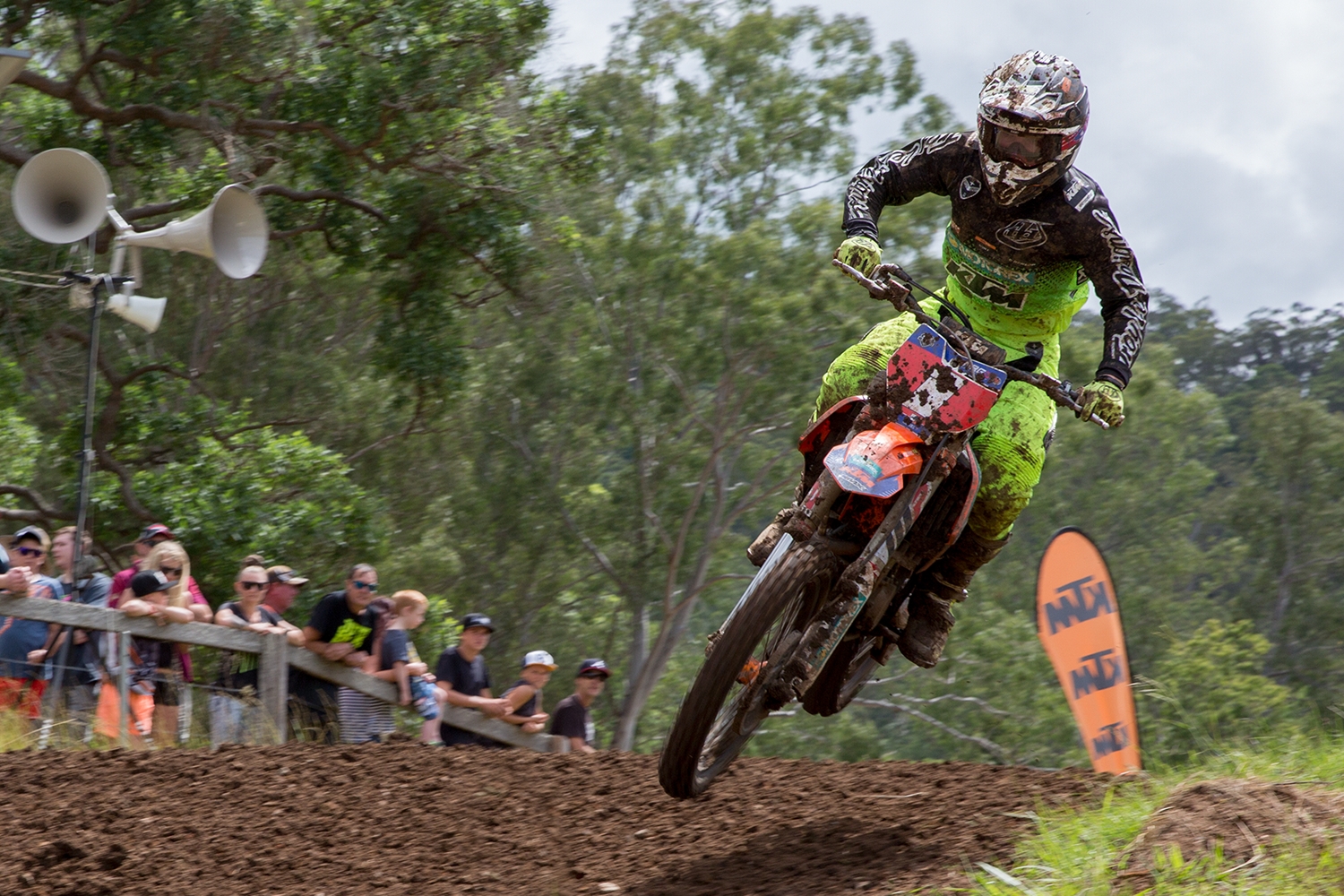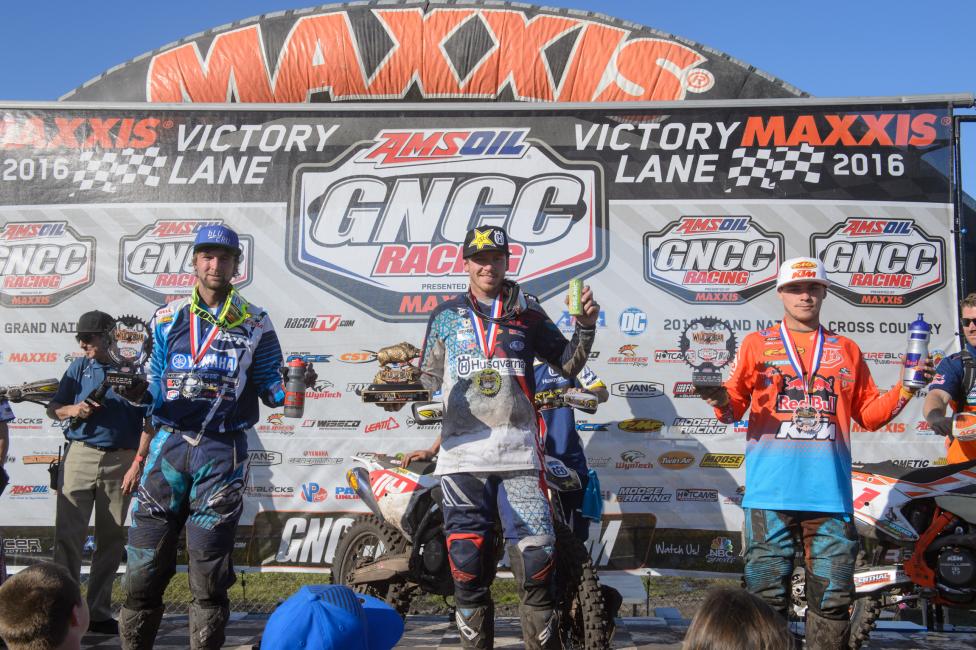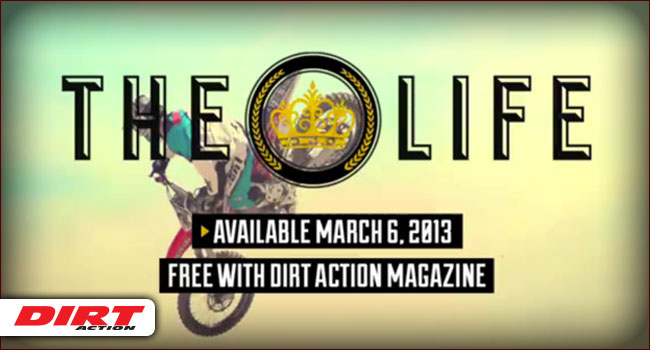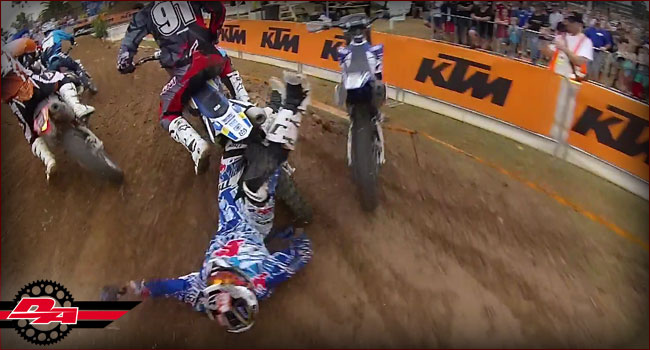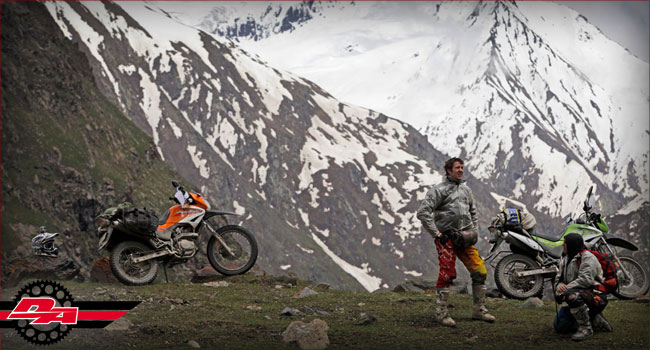
RIDING THE ROOF OF THE WORLD
Pioneering a Himalayan adventure on 150cc trailbikes, DIRT ACTION’s Adam Riemann tells of surviving cliff-edge trails and altitude sickness, eating goat guts with mountain men and encountering more machine-gun clad soldiers than you’d care to see in a lifetime.
STORY AND PICS BY ADAM RIEMANN

To be honest, I aspire to race dirtbikes for the sake of acquiring enough skill to ride one through any terrain. Just as a pilot has the ability to fly a plane around the world, I’d always wanted the ability to make a dirtbike carry me to the ends of the Earth. Inevitably, years of competing in enduro and extreme off-road events would enable me to become that rider.
The idea of venturing through India and into the Himalayas on a 150cc Hero Impulse — a motorcycle so different from what I’d normally ride — had all the makings of something monumental. So too did the challenge of guiding someone with zero dirtbike experience through its certain dangers.
You see, my father, Bernie, hasn’t owned a motorcycle in more than 30 years. Even then, it was an old Yamaha XS650 road bike; he’d prop me on the tank for a ride around the block now and then. Those were my earliest memories on a motorbike and the last time we’d ever shared a motorcycle experience together.
Ours is no fairy tale and the reasons behind going to India together are far from a conventional father-son travel story. But finding ourselves huddled in a tent at 5000m, nearly unconscious with altitude sickness, we were clearly on common ground. There we were, both willing to charge headfirst into the unknown, paying toll by hardship for rite of passage into one of the most majestic places on Earth.
The travails of this 4500km journey can never be truly conveyed in the pages of a magazine but, in celebration of coming out of it alive, this is one story that has to be told …
DAYS OF THE RAJ
A moto-journey of this magnitude doesn’t come to fruition without allowing it to stray from its original idea and take on a life of its own. In fact, the subtle interventions that lead us to pioneer a ride across the base of North India’s military stronghold (a route skirting the borders of Pakistan and China) were nothing short of divine.
The most significant one came from a complete stranger via a series of emails Dad had been posting on motorcycle touring forums. It turns out this guy was a Himalayan motorcycle adventurer from England who openly outlined every conceivable risk and reason for us not to dare embark on our proposed ride: “Sorry, guys, you’ve picked the very toughest season to travel in India by any vehicle — let alone a motorbike!”
He spoke of extreme heat, monsoonal dumps, drunken truck drivers and crumbling cliff-edge roads, then signed off by telling us to go to Bali and hire a scooter: “The weather will be fantastic this time of year!”
Undeterred by his negative response, we extracted two small positives from his longwinded letter, the first being an infamous motorcycle route in the Himalayas. Even then he warned, “Two foreigners on bikes would make good target practice for the Pakistani militants hiding out in the mountains.” Right, OK.
The second positive was a bike hire contact by the name of Mr Rajiv Yadav, who would later prove to be our greatest support and loyal friend. Affectionately known as Raj, he is one of the more recognised motorcycle tour operators in India, sporting a fleet of Royal Enfields. Now, no disrespect to Raj, but the overweight and under-suspended British-design road bike was never going to be the motorcycle I’d be riding into the Himalayas.
So, I did some research of my own for anything in India resembling a dirtbike. Then, bang! — the mighty 150cc Hero Impulse shows up. A dedicated Indian trailbike originally built by Honda, decent ground clearance and adequate suspension travel qualified the Hero as a fine steed for our evolving adventure.
With that, I started email correspondence with Raj and within one week he’d purchased two brand-new 150cc Heroes in his name. As foreigners, our only way of acquiring these bikes was to hire them from an Indian resident. To Raj’s credit, it was a great act of selflessness to put aside his pride in his Enfields, set us up with the 150s and offer us accommodation in his own home. India, it’s on!
TOUCHDOWN
We land in Delhi on June 3 and the heat, dust, traffic and population overload hit us in the face as hard as their curries do. However, my biggest concern is in Dad’s lack of riding ability: “I can stop fine with the front brake; why do you need to use the rear brake anyway? It’s so awkward.”
I can’t believe I’m hearing this right as we’re leaving the Hero dealership for our first traffic run with Raj. The intercom headsets I’d brought are now a critical part of the ol’ boy’s crash course on riding a bike, as I try incessantly to relay the absolute importance of the rear brake. Inevitably, Dad tucks the front end while trying to pull up for a bottleneck of tuk-tuks (three-wheeled taxis). He grabs a handful of front brake without even touching the rear brake then slaps down hard into the bitumen. Luckily, the most ruthless traffic on the planet flows around him like water. It’s the most valuable experience he can receive, given the steep, cliff-edge mountain trails we’re set to encounter.
With the ol’ boy bandaged up, we later dine in a restaurant aptly named Days of the Raj, cherishing the remaining hours with our new Indian friend, Rajiv. As dish after dish of real Indian cuisine fills the table — along with several goblets of Old Monk rum — our Himalayan adventure officially opens.
SEETHING HUMANITY
Leaving the safety of Raj’s domain at 4am in the morning to take on the chaotic networks of Delhi’s greater metropolis is daunting, but all faith lies in the function of my Garmin GPS. An eerie glow of street lights falls on the grim outlines of feral dogs, wandering cattle and the homeless sleeping on anything they can use from the abundance of rubbish scattered along pulverised bitumen streets.
Our Shoei helmets, Scott goggles, Pod MX kneebraces, Fox 360 nylons, A-star boots and Scott 250 Enduro jackets form a cocoon of safety from this foreign environment. Our core temperatures are cooled by sweat and airflow as we dodge trucks, cars, bikes and the countless Indians materialising with the break of dawn. Somewhere, the sun has risen over India but the blanket of dust, diesel fumes and heat haze diffuses the morning light to a uniform amber glow from above.
With one eye on Dad, I’m all ears to my headset as it relays the synthesised female tones of the GPS, like the instructions of an angel guiding me through Hell. This is not a place where you can afford mishap or misjudgement. We are strangers in a strange land and the thousands of faces staring back at us with distant looks in their eyes only affirm that.
As dirt alleys turn to patchwork bitumen streets, overpasses and motorways, we enter what can only be described as a mass migration of trucks, bikes, cars, cows, dogs, goats, people, donkeys and carts, all competing for space on the highway. Our 400km-plus journey north to the foothills of the Himalayas is more like a post-holocaust pilgrimage than a ride through the country. It’s simply overwhelming: town after town, linked by one industrial junkyard to the next and lined with street shacks selling anything from sun-baked packets of chips and Pepsi to corn cooked on coals. There are people washing under roadside taps and kids stripping truck gearboxes in the dirt while men in business shirts splash water over their fruit carts which lean against workshops grinding steel or smashing iron — it’s just seething humanity as far as the eye can see. And then there’s the smell.
TOO HIGH, TOO FAST
After taking refuge for the night in the foothills town of Mandi, our ascent into the crisp Himalayan air is a welcome relief from the lowland chaos and heat. From there begins a 152km ride to the crest of Rohtang Pass, a 3960m snow-capped mountain and our first taste of high altitude.
As the crow flies, it’s about 100km away, but the roads weaving back and forth along the mountain cliffs add greater distance and spectacular views. However, with every kilometre ascended, the road becomes narrower and the trucks more difficult to pass as our bikes are slowly sapped of horsepower.
As we climb into the clouds, the temperature is dropping fast but the 150s’ horsepower is dropping faster. They’re struggling to pull second gear up the muddy, snow-sodden road, yet the real issue is the fact we’ve not taken heed of the warnings of imminent altitude sickness. Without really understanding the severity of our situation, we crest Rohtang in less than six hours after leaving Mandi, which is an elevation change of more than 3000m — six times the recommended maximum of 500m per day! Maybe it’s our frozen hands, the distraction of magnificent landscape or the focus needed to avoid riding over a cliff but, whatever the case, altitude sickness is setting in.
By afternoon, we’ve descended Rohtang to a small village at 3100m. Some locals take us into a kitchen shack, thaw our hands and serve chai tea. Never will you appreciate a hot tea as much as you do when it’s thawing your body from snow-forced wind chill. This is the boost we need to press on to our intended destination of Keylong, which we finally make after an arduous ride in the dark. The luxury of a cheap hotel allows a recharge of the camera gear, reboot of morale and a place to service the bikes — but the strength to do any of this is hard to find.
By morning I wake in a stupor, fumble through two oil changes on the bikes and fashion two sets of handguards out of plastic bottles, purely for the sake of reducing wind chill at speed. Somewhere in my high-altitude daze and weakened state, I have an epiphany over the horsepower situation and start molesting the Hero’s carburetor. Having removed the slide to find it has a fixed needle jet, I cut off a small piece of its return spring and use that as a restrictor for the main jet, threading it through and curling the end, effectively reducing the jet size by half. The thinning air has enriched the air/fuel ratio to the point that the engines can barely achieve combustion, so this is the only way I can lean the mixture to an adequate ratio.
PEAK ALTITUDE
With a full 10-litre fuel can shoved into my left saddle bag, as well as a tent, tripod and all our Hero spares spread over the rest of my bike — plus 15kg of camera gear strapped to my back — it’s a relief the carby mod has restored some horsepower to pull the weight. Leaving Keylong for the 380km haul to the Ladakh region’s border town of Leh, with no fuel stops along the way, is an absolute mission. Our bikes are carrying us faster but breathing is becoming a real problem.
A series of cliff-edge dirt roads meandering in and out of valley basins are both visually and literally breathtaking as the struggle to inhale thin air gets worse. When we eventually arrive at the 4900m police checkpoint of Sarchu, a cold reception from the gun-toting police soon warms as they watch me flop from the bike and struggle to pull a passport from my pack. Both piss weak, we decide to make camp after the cops feed us from their tent, which doubles as a ration supply and restaurant. It takes every ounce of will and strength to assemble the tent and climb into our sleeping bags. Being so close to passing out as we are, a dreamy daze in and out of consciousness makes a night in the windswept valley seem like a bizarre dream.
By morning I’m no better, on my back and slowly pulling necessary bits of riding gear towards my body to fit them in order. About 30 minutes later, I crawl out of the tent to give Dad the space to do the same. As we crest the 5300m Taglang Pass, riding is now an autopilot function. Withdrawn into my moto-cocoon, I’m a spellbound passenger in awe of the passing terrain, offering minimal input to the bike and exerting as little effort as possible. Seated in one position, I set the throttle, lean a little for corners and interrupt momentum as little as possible. Occasionally I lift a hand to wave at a fellow rider, paddling an Enfield through rocky mud with both feet planted in the slop and doing all of about 7km/h. Dad is crashing regularly in the ruts and barely has the strength to lift his bike. At regular intervals I sit and watch from an opposing mountain face about 10km ahead, waiting for his tiny silhouette to start moving again.
By twilight we make it to Leh. At 3400m, it’s the highest town in India and the majority of its population is of Tibetan origin. I spot a hotel sign on a back-street rooftop and home in. Within 10 minutes of checking in, I’m squatting over a hole in the floor to take a dump and stepping into a bucket of hot water to wash. It’s heaven. Dad’s condition is worse and he can barely speak.
After feeding us dinner, then breakfast in his own home, Feroz the hotel owner takes Dad to the local hospital for treatment. We’re extremely lucky to have ridden off the mountain pass, as we later learn our ailments are the start of what can cause people to perish if exposure to altitude continues. A grim experience, but Dad returns loaded up with antibiotics. We use the remainder of the day to sleep and recover.

HEAVEN ON EARTH
Having already experienced more than 800km of panorama you need to see to believe, I never expected a place more hypnotically majestic would appear during the journey from Ladakh into Kashmir — a region referred to as Shangri-La, the mythical Himalayan utopia. The irony is it’s endured three wars between Pakistan and India over the past 60 years. India has won all three, yet the battle continues through acts of militant terrorism over ownership of what is believed to be a spiritual place.
We pass through the town of Kargil — site of the last war in 1999 — and the number of machine-gun-toting soldiers has tripled. Presenting passports at check posts is now a transaction through a barbed wire bunker, where they make you fill out the paperwork yourself so they can retain a firm grip on their machine gun.
The contrast of military scattered through glacial scenery has me intimidated and in awe. Weaving past dozens of troop carriers, I ponder how two Europeans can pass freely through this sacred mountainscape on motorbikes as if it’s some kind of tourist attraction. I guess the reality of its war-torn heritage is the reason it’s not a top-10 tourist destination at your local travel agent.
But we’re no tourists; our battered two-wheel donkeys and the ordeals of the journey etched into our faces are testament to that. Our toll into Heaven on Earth had well and truly been paid over the past 1400km and I believe the soldiers we meet along the way can see that. Not once is there harassment for money or our passage denied.
Military activity continues all the way into the valley of Srinagar, Kashmir’s capital city, and becomes more concentrated as we push on south to the town of Kishtwar. For every half-kilometre travelled between village and valley, there are two to three soldiers on alert. Some are standing in a field, some watching kids play, but all are heavily armed and deadly serious. This is a life of war I can’t truly comprehend as a foreigner and, on approach to the district of Jammu, a warning of recent militant activity alters the course ahead. Our Himalayan loop is nearing completion but we must make a 240km beeline across un-mapped territory to avoid the perils of a terrorist threat in Jammu.
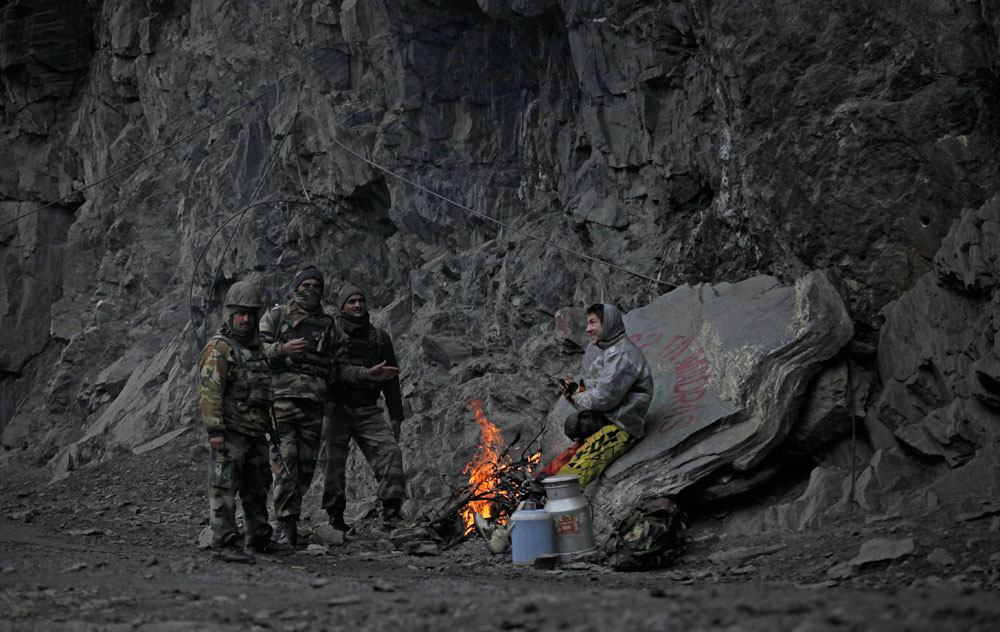
OFF THE MAP
Nine days and 1630km since riding out of Delhi, we detour out of Kishtwar into a rugged route following the Chenab River valley, which is sparsely populated by small villages. I no longer have the reassurance of GPS so my only way of gauging we’re on the right track is to interpolate way points over a topographical image — with no marked tracks!
Trying to buy bottled water from a village suggests we’re the first Europeans to have ventured here, as we’re swarmed by the persistent stare and probing of people standing uncomfortably close. It’s also obvious we’ve passed India’s line of defence to this region, as military presence is now replaced by the steepest, most inaccessible ravines you can imagine. The route starts out as a riverside dirt road hugging the valley walls and slowly elevates into a rocky channel etched into the side of recurring cliff faces. A canopy of rock to your left, a 1000m drop to your right and I’m charging the 150 through it as if in an action scene from Indiana Jones.
To that day I’d never ridden a dirtbike on the edge, metaphorically speaking, for so long through such epic landscape. The off-road extremes are causing gaps of more than 10km and 30 minutes between Dad and me but it gives me the time to photograph, film and digest this treacherously magical place.
One hundred kilometres in and I’m met with a severe rock fall. Had I been on my current race bike in Australia, I’d have tackled it in an extreme fashion. But, as another fridge-size boulder peels away from the cliff above and smashes into the pile six feet from me, attempting to cross it would be suicidal. Within the hour, a grinding, screeching, diesel-spewing beast appears from a nearby village. Protected only by a bandana and beanie, the driver protruding from the dozer’s back proceeds to force it into the pile to clear the path. Boulders plummeting over the cliff and smashing into the river below are simply magnificent but the bravery of that driver, at risk of being crushed and crumbled over the edge, is something I’ll never forget.
The three-hour delay on the cliff edge forces us to sleep in the mountains. Previously warned by locals not to stray from the road or we risk a snow leopard attack, we find an uninhabited canvas tarp strung over a branch, just down from a small miners camp. Curious at our arrival, two miners approach and offer a blanket to add to our mattress of leaves, then invite us to dinner under their tent. The flicker of flames casts shadows of hand gestures on the cold, smoky roof as we huddle in the dirt among a dozen Indians who can’t string together any English. Whatever joy we’ve brought by showing up in their lives, they’re giving it back tenfold by allowing us to spend a night in their world. We’re completely off the map and anyone in Australia concerned for our safety would be oblivious to our whereabouts, yet we could not be in safer hands.
I lean back into a sack of flour, dipping freshly baked chapati into a dish that tastes like a goat smells. It gets better with every mouthful as I sit comfortably numb among people fascinated by our presence. I try and process the enormity of a journey that has continually evolved into something we could never have planned, or imagined. Despite a few heated moments with the ol’ boy along the way, this is a memory that’ll stay with us forever. I’ve dragged Dad well outside his comfort zone for 1800km and he’s coping better than I expected a complete dirtbike novice could — but will he make it through Nepal?

ENFIELD vs HERO
For those unaware, the Royal Enfield is a British-designed vintage-style road bike originally imported into India for the police and military to patrol the country’s borders. This movement has since evolved a culture of motorcyclists who tour Himalayan roads with all the intensity of your grandparents towing their caravan. Steep military service tracks of rocky gravel, mud, snow, bends and curves — all of which meander along cliff faces and river valleys — mean their pace is regularly slowed to a foot-dabbing crawl. However, the new models are fuel injected, giving the Enfield its one and only advantage at altitude over the Hero Impulse. But the suspension travel and dirtbike agility of the 150cc Hero Impulse make it a more capable bike to traverse the off-road conditions. When jetted for altitudes over 3000m, a 400km range is achievable from its 11-litre tank, negating the need to carry as much fuel as the Enfields do.
SACRED IS THE COW
Of all the trucks, bikes, cars and dogs coming at you head on in India, the most common obstacle is the cow. Whatever you do, don’t hit one because if that doesn’t kill you, a mob of Indians will. To them, the cow is worshipped as the second mother. Lord Krishna loved to suckle its milk as a child and a cow can go on providing milk for a village its whole life. Cows roam uninhibited across all India and sometimes wander nonchalantly onto four-lane motorways causing trucks, buses and cars to scramble to avoid harming the beast. The cow’s aloof nature comes from a life of serenity in which not a hair on its head is ever harmed. Incidentally, for a country hosting a quarter of the world’s cattle population, you cannot get a steak anywhere in India. Don’t bother looking; don’t even try ordering it because the closest you’ll get to a T-bone is being taken out by a cow crossing the road.
Read Part 2 HERE
Watch The VIDEO HERE
Want more articles like this? Subscribe to Dirt Action Magazine.

